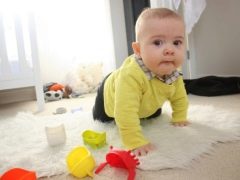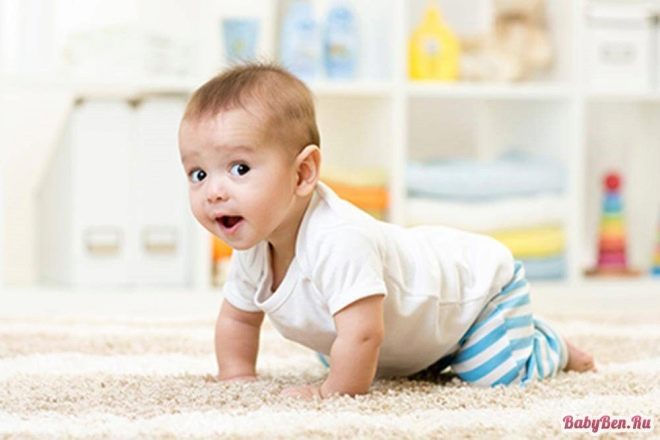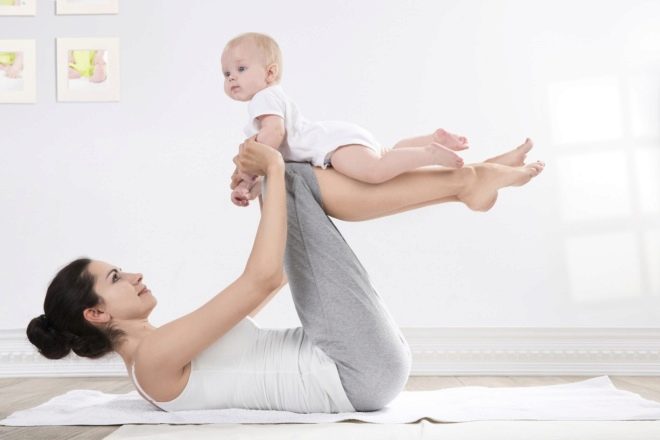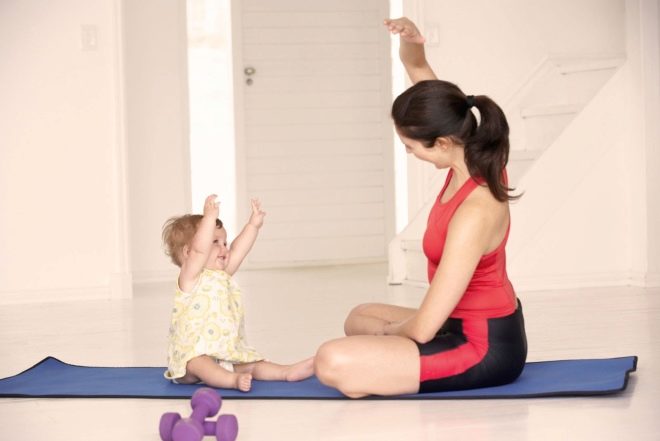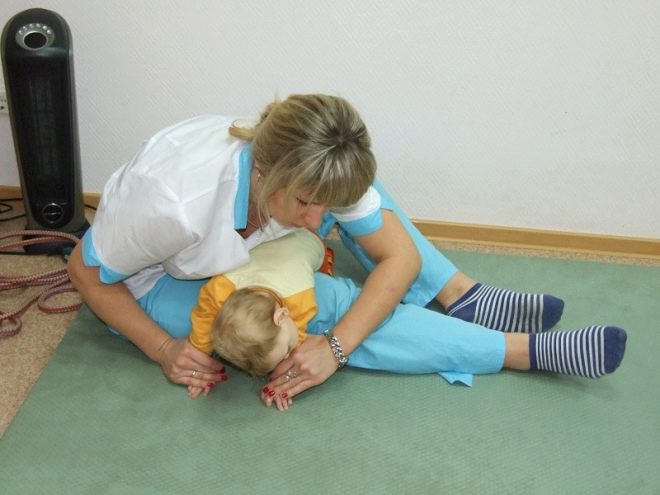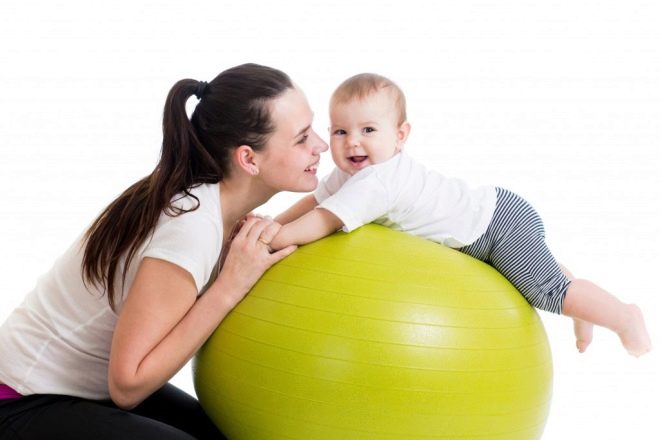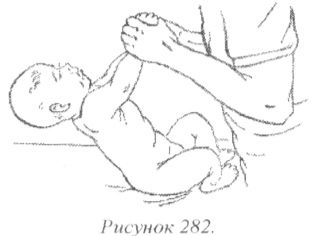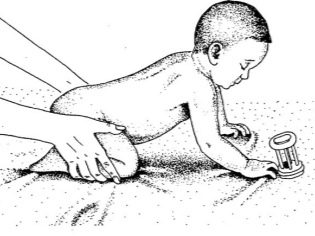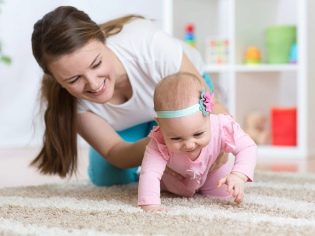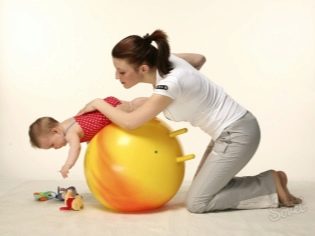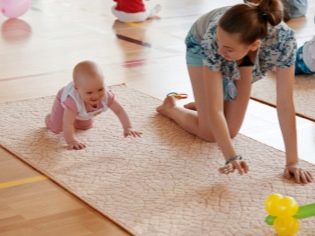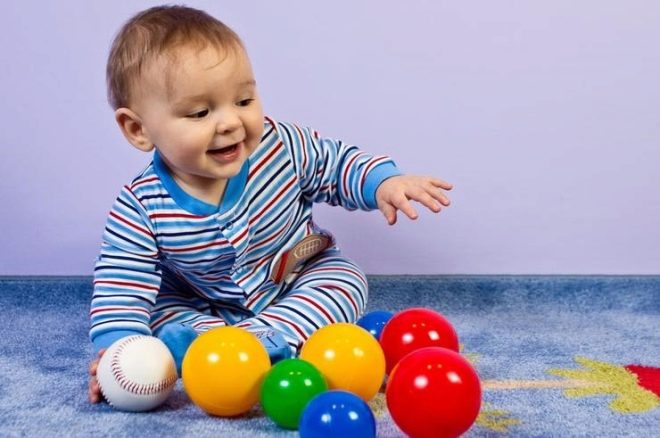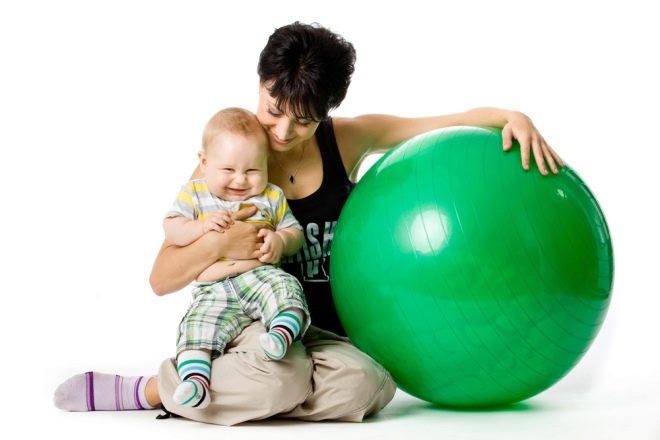Gymnastics for a child of 7-10 months
In the second half of the year, children become active, some - even restless. Everything is interesting for them, they want to move, move, change their body position. Karapuz comprehends new skills rapidly. You can help him fortifying exercises, gymnastics, which includes a set of exercises for a certain age.
In this article we will talk in detail about how to do gymnastics with a child from 7 to 10 months.
What to consider?
Gymnastics for the baby should not be burdensome, and physical exertion is excessive. Therefore, when planning a set of exercises, it is necessary to take into account the peculiarities of the character, the state of health of your child, and the degree of his readiness to master this or that motor skill.
At 7 months, if the son or daughter is not yet sitting, you can add exercises to strengthen the back, abdomen, arms and neck. If the child is confident on all fours, you can add him exercises that will stimulate crawling.
At 10 months, you can move on to strengthening the legs, because soon the baby will have to take its first steps, and some kids are already trying to do them. Be sure to take into account the existing skills of karapuz to build on their basis a new set of classes.
It is clear that exercises like “Bicycle” and “Frog”, which led your child to delight in 3-4 months, are unlikely to be perceived by him now with pleasure, because not every kid will agree to lie quietly in the second half of the year in wakefulness.
Use the child's desire to move, saturate the gymnastics program with active exercises that require the participation of the child himself in everything that happens.
Most children at 8-9 months are well acquainted with their bodies, they know where the pens are, where the legs are, they understand simple familiar phrases, and therefore gymnastics for a child should be made as clear and simple as possible.
Exercises for crawling, sitting, standing, walking should be accompanied by cheerful and good-natured comments from the mother, this will give the child a sense of play, will interest him, he will be happy to do fun and useful tricks.
If the toddler has pathologies of the musculoskeletal system, neurological diseases, other congenital or acquired diseases, it is important to add new exercises with the permission of the physiotherapist or the attending physician, because these kids need a very specific load on specific muscle groups, depending on the diagnosis.
Why do gymnastics?
Gymnastics, as already mentioned, will help your child to master new motor skills more actively, prepare his muscle and bone tissue for ever-increasing loads, for standing, for the first independent steps. Gymnastics develops speech, fantasy, partially meets the needs of the child in emotional and tactile contact with the mother.
In children who exercise regularly, blood circulation improves, coordination of movements and the vestibular apparatus are improved. Such children are less likely to get sick, sleep better and do not have, as a rule, problems with appetite.
Exercises for babies
Include in the gym complex exercises that you might have done with the baby at a more tender age, provided that the baby does not object to them. If the exercises are not boring, it will be enough just to add new techniques to the complex that are appropriate to the age of the toddler.
7-8 months
These children need to be promoted in crawling and sitting. We list several effective exercises to stimulate these skills.
- "Corner". Stretch to the child, which lies on the back, the index fingers of your hands. When he takes them, pull your hands a little towards you. Do not lift the baby by force, even if he himself, based on the strength of his arms, will raise the torso as much as muscular development allows. Do not plant the child. When the angle of elevation is 45 degrees, gently lower the child back. Do the exercise 5-10 times.
- "Crawling with support". Put the toddler on the stomach, place your hand under the tummy and start to raise your palm smoothly upwards. When the baby is on all fours, hold it in that position for about a minute. Do not loosen the arm. Complicate the exercise can be when the baby starts to stand on all fours more confidently. Put a toy with a sound in front of the peanut and support the crumb under your tummy while he tries to reach it. If at the same time he begins to rearrange the arms and legs, consider that he will begin to creep in the near future.
- "Wheelbarrow". This exercise helps to strengthen the muscles of the arms and neck. Take the baby lying on his stomach, for the legs and slowly move with him along the floor forward. It is necessary to ensure that the child "walked" in his arms, rearranging them to move.
Swaying on the ball, trying to get a toy while lying on a fitball with a stomach with the obligatory support of parents for legs are useful.
9-10 months
Add to the complex of children of this age exercises to strengthen the feet and lower legs. Prepare the child for self-standing and walking. You can also add exercise in a sitting position. Here are some interesting tricks.
- "Snowball". Gymnastic ball put on the floor, put the toddler on the legs, put the handle on the ball, constantly hold the baby under the arms, but not so that his legs dangling in the air. Start moving forward, slightly tilting the body of the child to the ball. It is necessary to ensure that the child performs the primary steps with the support and support hands on the ball turning over it.
- "Baton". Teach your son or daughter to move more, you will be helped by a small ball, a wand, from which, if desired, you can make a relay. Put the object and crawl along with the baby on all fours before it. Give your baby the opportunity to catch the first one with a stick or ball. Sincerely and emotionally rejoice in his victory.
- "Stomping and slopes." Put your child's back to him so that his feet were on yours. Keep the karapuz under your arms. Start taking steps. When you reach the toy on the floor, hold the child so that he can bend over and grab it. Then start moving to a new goal.
- "Thrifty Dwarf." For this exercise, you will need a few small balls that fit in the palm of a child, and a basket or box. Sit the baby. Sit to the side of it, for example, to the right. Pull the ball crumble, he will take it with his right hand. It is important that the child turns its body in half a turn. Next, the baby needs to shift the ball to the other hand and put it in the box to his left. At this point, you will prepare a new ball, with which you will need to do the same.
Children of this age are great for active exercises with rhythmic music, some even begin to squat or sway to the beat. Use it during your classes.
Useful tips
- Work out without clothes, if possible, in the summer spend gymnastics in the fresh air. So it will be possible to combine air baths and tempering with useful exercise.
- Do not exercise in the days when the child has a fever, teething, no mood to play and chat.
- If there are older children in the family, ask them to “play up” to take part in active exercises for children from 8-9 months. At this age, an imitation is developed, and the kid will learn new games and tricks much faster if he sees how others do it.
- Always start gymnastics after a pre-session of a light massage.
- In order not to overwhelm the nervous system of the baby and not to disturb his sleep, do exercises only in the morning. In the evening, it will be possible to have a soft relaxation massage and take a bath.
Learn more about gymnastics for children 7-8 months, you will learn from the following video.
